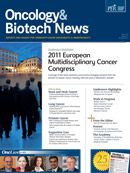Publication
Article
Oncology & Biotech News
Not All Viruses Are the Same
Author(s):
A look at tweaking the corruptive influence of the virus information code to selectively corrupt cancer cells while sparing (normal) cells that do not have a specific cancer phenotype.

Andrew L. Pecora, MD
Editor-in-Chief Chief Innovations Officer, Professor, and Vice President of Cancer Services John Theurer Cancer Center at Hackensack University Medical Center
When you look up the definition of the word “virus,” several interesting facets of the word emerge: “A corrupting influence;” “a poison produced in a person or animal suffering from an infectious disease;” or the even more clinically descriptive “any of a group of disease-producing agents smaller than bacteria and dependent on living tissue of a host for their reproduction and growth.”1 In the nonclinical realm, viruses can have a profound corrupting influence on software, and often, as a consequence on the functioning of “hardware.” The commonality of the corrupting influence—clinical or not—is the insertion of information (eg, new code) that alters the otherwise normal functioning of the infected entity, and in the usual case, it is rarely to the benefit of the entity (ie, a cell) or the host in which the entity resides.
In a recent article in Nature, Breitbach and colleagues2 embrace the corrupting influence of a specific virus (poxvirus), and have been able to tweak the information code of the virus to selectively corrupt cancer cells while sparing (normal) cells that do not have a specific cancer phenotype. The genetically altered virus, JX-594, is a smallpox vaccine derivative of the Wyeth strain of vaccinia virus. To obtain tumor selectivity, the researchers successfully inserted an inactivated thymidine kinase gene together with 2 transgenes: a granulocytemacrophage colony-stimulating factor (GM-CSF)- producing gene to stimulate an immune response and a gene to allow for detection (β-galactosidase).
In a specific solid tumor type where there is excessive epidermal growth factor receptor-induced Ras signaling, thymidine kinase is produced in large quantities. The engineered virus is able to replicate in the tumor cell somewhat exclusively because the tumor cells provide the thymidine kinase at levels not present in nonmalignant cells. The term oncolytic virus was coined to describe the ability of the virus to target and kill cancer cells.
In a phase I clinical trial, the JX-594 oncolytic virus resulted in dose-related antitumor activity. Much like the results of the trial of an oncolytic Newcastle disease virus (PV701) that I conducted in 20023, the JX-594 oncolytic virus selectively infects and replicates in tumor tissue, but not in adjacent healthy tissue or blood mononuclear cells. As in my PV701 study, the greatest clinical effects were observed after dosing of the JX-594 oncolytic virus in the 109 plaqueforming unit range (PFU; 1 virion creates 1 plaque). However, unique to the JX-594 oncolytic virus was the demonstrated ability to insert additional code (ie, GM-CSF production) to enhance the clinical effect.
It would be fair to say that no one looks forward to having a virus infect them or their computer. However, nature has its wisdom, and the viral transfer of information has contributed significantly to evolution. As we begin to tap that wisdom to our advantage, therapeutics like PV701 and JX-594 may become as ubiquitous as common viruses.
References
- Thorton desk dictionary. 1962.
- Breitbach CJ, Burke J, Jonker D, et al. Intravenous delivery of a multi-mechanistic cancer-targeted oncolytic poxvirus in humans. Nature. 2011;477(7362):99-102.
- Pecora AL, Rizvi N, Cohen GI, et al. Phase I trial of intravenous administration of PV701, an oncolytic virus, in patients with advanced solid cancers. J Clin Oncol. 2002; 20(9):2251-2266.










